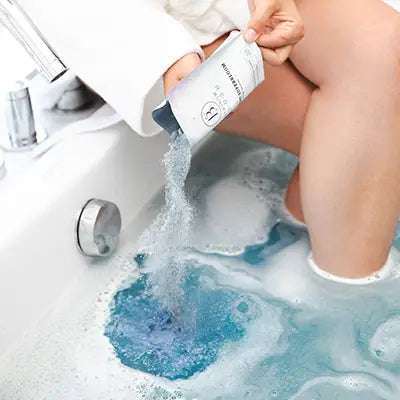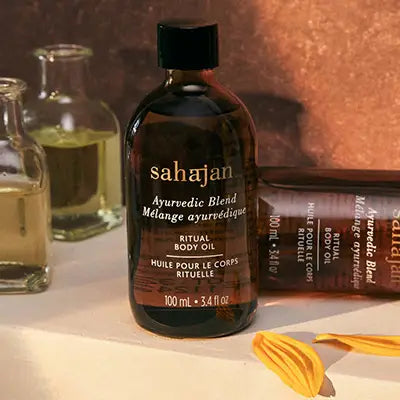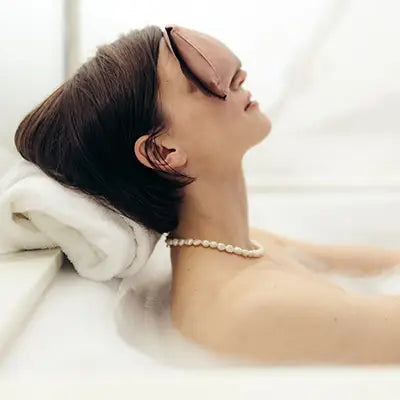Formulated Without
The list below are ingredients that have been questioned over recent years in the beauty industry. While these continue to be reviewed by research scientists, the medical community and international governing bodies regarding potential harmful effects, we at Bathorium believe in taking a more holistic approach.
When in doubt, we always formulate without.
PARABENS
Preservative
ALUMINUM
Sweat Control
PETROLATUM
Skin barrier and skin softener
Derived from processed petroleum. There is concern regarding unsustainable sourcing and possible contamination from Polyaromatic Hydrocarbons (PAHs) which are linked to cancer.Other names: Liquid Paraffin, Mineral Oil Jelly and Petroleum Jelly
BHA & BHT
Preservative
PHTHALATES
Product strengthener
Many cosmetics and personal care products including nail polish. Chemicals used to increase flexibility and strength of plastics. Usually found within fragrances. Some phtalates have been linked to hormone disruption. Other names: Bensybutyl Phthalate (BzBP), Bi-n-butyl Phthalate or Dibutyl Phthalate (DBP) DEP DEHP and fragrance
COAL TAR DYES
Found in hair dyes, cosmetics and hair treatments, especially those for anti-dandruff.These are a mixture of many chemicals, often derived from petroleum and manufactured synthetically. They may often be contaminated with low levels of heavy metals and some are combined with aluminum substrates.Other Names:P-phenylenediamine. Common in colorants and hair dyes, it may appear with a five digit color Index (CI) # from 75000-77000 or may be listed as FD&C or D&C followed by a color.
SILOXANE
Softener and to promote product dry down
DEA (DIETHANOLAMINE) MEA (MONOETHANOLAMINE) & TEA (TRIETHANOLAMINE)
chelating agents and neutralizing agents
DEA (and derivatives) are on Prop 65 list. TEA and MEA are not but they can contain DEA by-products. May be contaminated with chemicals like Nitrosamines which are linked to cancer. The European Commission prohibits DEAs in cosmetics.Other Names:2-Aminoethanol, Triethanolamine, Diethanolamine, DEA, TEA, Cocamide DEA, Cocamide MEA, DEA-Cetyl Phosphate, DEA Oleth-3 Phosphate, Lauramide DEA, Linoleamide MEA, Myristamide DEA, Oleamide DEA, Stearamide MEA, TEA-Lauryl Sulfate
SODIUM LAURYL SULFATE
Detergents/Foaming Agent
Salt, acid derivatives. Detergent that makes products foam, lather and bubble. May cause irritation of the skin and mucous membranes.Other names: Sodium Lauryl Sulfate (SLS) and Sodium Laureth Sulfate (SLES)
We proudly use Sodium Lauryl Sulfoacotate within most of our soak lines. Read more on this ingredient here.
FORMALDEHYDE
Preservative
Has been linked to immune system toxicity and respiratory irritation. Other names: Not typically listed as an ingredient however these Formaldehyde "releasers" or "donors" are often listed on ingredient labels: DMDM Hydantoin, Diaxzolidinyl Urea, Imidazolidinyl Urea, Methanamine, Quaternium-15 and Sodium hHydroxymethylglycincate. May also appear as Cormalin, Formicaldehyde, Methanol, Methylaldehyde
TALC
Moisture Absorption
Some talc may contain the known carcinogen asbestos, therefore it should be avoided in powders and other personal care products.Other names: Talcum powder, cosmetic talc, Magnesium Silicate
MINERAL OIL
Moisturizer
A colorless and odorless oil that is made from petroleum—as a by-product of the distillation of petroleum to produce gasoline. Lightweight and inexpensive, it helps reduce water loss from the skin. Other names: Liquid Petroleum, Paraffin Oil and White Mineral Oil
TOLUENE
Antioxidant and solvent
This is often used as a solvent to improve adhesion and gloss. It has been linked to allergies and irritation. Toxic to the immune system, this solvent may cause birth defects.
NANOPARTICLES
Product transparency
May be toxic if inhaled. Ultra-fine and may cross over permeable membranes and into our bodies.
TRICLOSAN
Anti-fungal/ Anti-bacterial
May make bacteria resistant to antibiotics due to its overuse in cosmetics and cleaning products. 2016 FDA ruling states it can no longer be included in soaps and antiseptic washes. May be associated with hormone disruption.







